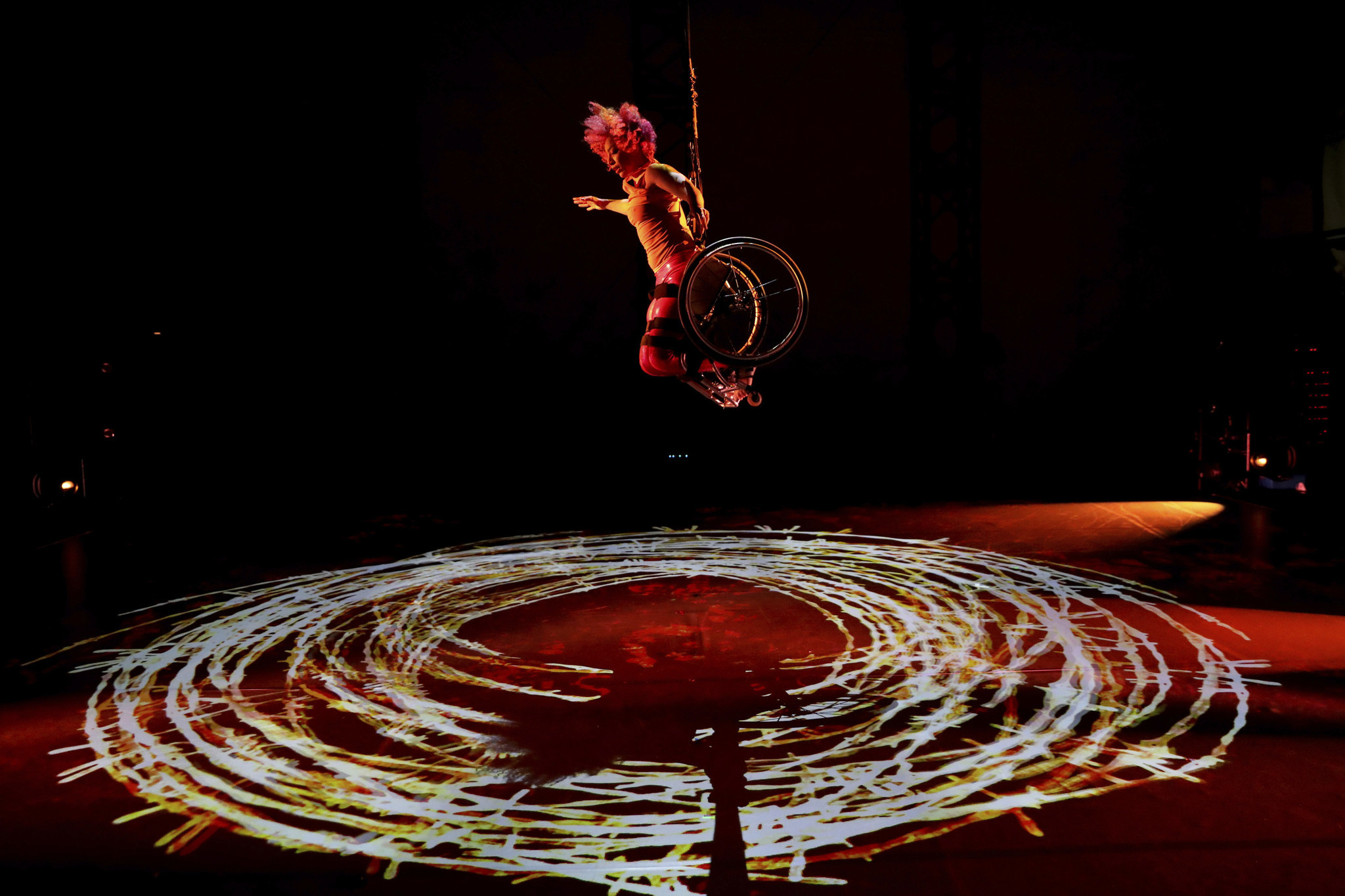Community, Leadership, Experimentation, Diversity, & Education
Pittsburgh Arts, Regional Theatre, New Work, Producing, Copyright, Labor Unions,
New Products, Coping Skills, J-O-Bs...
Theatre industry news, University & School of Drama Announcements, plus occasional course support for
Carnegie Mellon School of Drama Faculty, Staff, Students, and Alumni.
CMU School of Drama
Friday, April 29, 2022
Wheelchair aerial dance at center of ‘Wired’ at the MCA, a performance that centers disability
Chicago Tribune: Alice Sheppard does not shy away from a challenge. In devising her latest dance, “Wired,” she and her Bay Area disability arts company Kinetic Light had to first write the rule books for wheelchair aerial dance.
Subscribe to:
Post Comments (Atom)

4 comments:
This is a really cool concept for a show. Firstly, it was interesting to learn that the ideation process for this show came from visiting a museum. The "inspiration can come from anywhere" kind of matra gets thrown around a lot, so it's cool to see it being used in this context of making an actual, fully-produced show. I was also surprised to learn that the wheelchair aerial dance element came not strictly via innovating on aerial dance, but via trying to produce the wired theme in a dance in general. So, the show's design was story-centric rather than technology-centric. It was only after they had picked the theme that the creative team decided it needed to be a wheelchair aerial performance. I loved reading about how the team rose to the challenge, and met people with wheelchair aerial experience along the way. It makes sense to me, too, that it was difficult due to the lack of documentation of aerial shows in general, and even past aerial shows like this. I wonder if there's something we can put in place in the future to make innovative shows like this easier to put on.
This seems like an amazing show with some really special challenges. I would be really interested in learning more about how they had to work on the engineering of the new harnesses and how they worked the wheelchairs into them. It seems like a really fascinating challenge that this team seems to have overcome very well. I always love aerial dance and had no idea that Wired was not the one of the first to have disabled dancers in the air. I will definitely be going and looking into the circus performances that are mentioned in the article. The Wired team seems to have taken the basics from those performances and turned them into a whole new thing that is all their own. I also love the inspiration comes from a sculpture. It is really fascinating how Alice Sheppard took something that is so inherently stationary and turned it into some thing that is so alive and moving.
Accessibility in theatre is something that needs to be more talked about in our industry. It was crazy to me to learn about the amount of theatres that are inaccessible to many audience members, so I can’t even imagine the obstacles that disabled performers and crew members face for their jobs. In fact I’m sure the lack of accessibility has kept many talented professionals from being able to pursue this as a career. I’m so excited to hear about this piece because we should be highlighting these incredible performers. It was interesting to read about how flight is not a new concept for performers, in fact it has been around for a long time in the UK, New Zealand, and the US, but what is new is this performance’s approach to it. They see this as something other than a circus. I’m heading to chicago next week so hopefully I can snag a ticket.
I love that this show’s work is so focused on giving a voice to people who are typically not centered in art and performance. Kinetic Light’s mission is to create art that centers disability. Sheppard and the rest of the company are disabled artists who make work for disabled performers. Key to that vision are questions and advocacy around access — who “gets” to dance and who “gets” to watch or experience art? Since the company’s founding in 2016, Sheppard’s work consistently explores the intersections of disability, race and gender. “Wired,” premiering May 5-8 at the Museum of Contemporary Art in Chicago, is no exception, though it’s the first of Kinetic Light’s growing catalog to incorporate aerial dance. I think that this is a great step towards inclusivity in this industry. We need to understand that while we are an industry we are also a community that has a leadership role to play in the larger culture. I’m just really happy about it.
Post a Comment